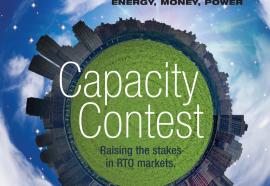Bonneville's Balancing Act
In the Pacific Northwest, you either spill water or spill wind.
The wind power industry has been up in arms ever since the Bonneville Power Administration earlier this year announced its Interim Environmental Redispatch and Negative Pricing Policy. That policy, applicable during periods of high spring runoff and heavy water flow volumes on the Federal Columbia River Power System, calls for BPA to redispatch and curtail access to transmission for wind power generating turbines, and to replace that resource with hydroelectric power generated via BOA hydroelectric dams, in order to avoid having to divert water through dam spillways, which could threaten fish and wildlife by creating excess levels of Total Dissolved Gas (TDG), which can cause Gas Bubble Trauma. Yet the legal issue remains unclear: Does this practice imply discrimination in the provision of transmission service, or is it simply a matter of system balancing and generation dispatch? In fact, the FERC may lack jurisdiction over the dispute, as it pertains to the fulfillment of BPA’s statutory mandates.










